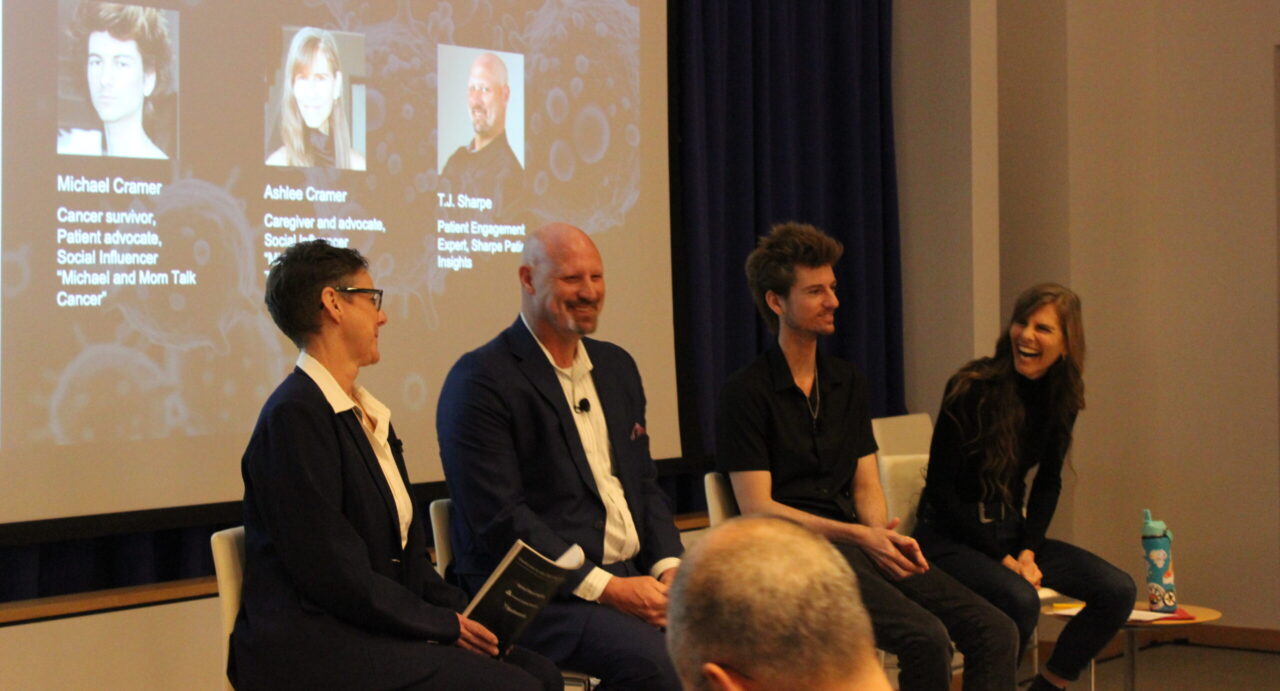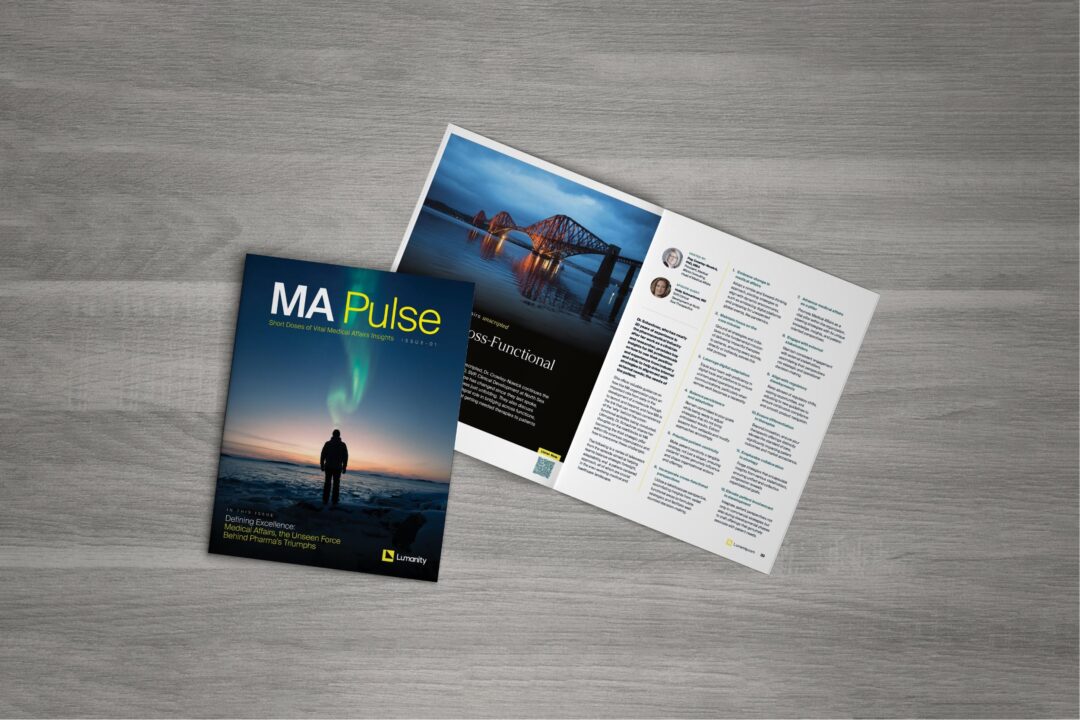Once again, the annual ESMO Congress was packed with cutting-edge data across the conference for our experts in attendance to dig into. New data were shared across more than 200 sessions and over 2,000 abstracts. We saw continued progress in immuno-oncology (IO); intriguing emergence of novel targeted therapies; developing discussions around the patient experience; a lot of buzz around technology, including artificial intelligence (AI); and talk around regulation and practice – the bringing in of the EU Joint Clinical Assessment in 2025 was on many peoples’ minds.
On the cusp of an AI revolution?
Advances in AI and other new technologies are revolutionizing oncology, to the extent that ESMO announced a new “AI and Digital Oncology Congress” for 2025. As we are already seeing, AI will play an increased role in oncology care, from automation to treatment decision-making and diagnostic tools.
Research presented at the Congress showed other areas of innovation. Notably, novel screening methods (including liquid biopsies and advanced imaging techniques) are aimed at detecting cancer earlier and furthering understanding of how cancer may be prevented.
Key learning: Expect AI and digital technologies to increasingly influence various aspects of oncology care, from diagnostics to treatment decisions. Engage with developments now – otherwise, you may find yourself behind
Key learning: New and continuing innovations in screening methods are set to improve early detection and prevention strategies
Immunotherapy combinations and novel targeted therapies
Novel therapeutic strategies are the main draw for thousands of ESMO’s attendees, and unsurprisingly, this year saw a rich display of data for varied mechanisms and modalities.
Within the IO field, ESMO was perhaps overshadowed a little by the data from the World Congress on Lung Cancer (WCLC) the previous week, where a bispecific antibody targeting PD-1 and VEGF (ivonescimab) showed clear superiority head-to-head against pembrolizumab in non-small-cell lung cancer (NSCLC). In contrast, the data presented at ESMO focused on more traditional combination therapies and reflected traditional patterns of ups and downs, but these strategies may ultimately benefit a wider range of cancer patients:
- IO + IO combinations. There have been many failures of combinations of two IO drugs. Data showed some positive readouts (belrestotug + dostarlimab; relatlimab + nivolumab + chemotherapy), but none as impressive as that of the bispecifics
- IO + VEGF(R) inhibitors. New data regarding the use of IO therapeutics coupled with treatments targeting the vascular endothelial growth factor (VEGF) axis revealed a mixed record, with some wins (pembrolizumab + lenvatinib + transarterial chemoembolization in hepatocellular carcinoma [HCC]) and some losses (atezolizumab + bevacizumab in HCC)
- IO + ADCs. So far, there have been fewer trials and fewer failures. Pembrolizumab + enfortumab vedotin in urothelial cancer proves that this strategy can work wonders in the right circumstances. Other combinations are starting to show promising early data
- Novel non-IO mechanisms. ESMO also provided a platform to showcase promising data – albeit in many cases early data – for a wide array of novel mechanisms (see right)
Key learning: This year’s ESMO did not trumpet any game-changing breakthroughs, but did continue the march of progress on immunotherapy, ADCs, and targeted therapies. Early data for novel mechanisms hint at the promise of future breakthroughs.
Innovative approaches in cancer therapeutics
New RAS-targeted therapies. There are now more and more drugs for the once “undruggable” KRAS, including next-generation G12C inhibitors and a first-in-class G12D inhibitor. RAF + MEK dual inhibition also shows promise for NRAS-mutant melanoma.
Novel ADCs. Antibody–drug conjugates are still hot, and the competition continues to intensify; at ESMO we saw more data for more ADCs targeting B7-H3, B7-H4, and Trop2. There was also a strong showing for other targets including MET, HER3, and Claudin6.
Synthetic lethality. Most cancer-targeted therapies inhibit a protein that has been made overactive during oncogenesis, but synthetic lethality can exploit vulnerabilities created by the loss of a protein. So far there is one big success story (PARP inhibitors for BRCA mutation or homologous recombination deficiency), but at ESMO we saw new data supporting PRMT5 inhibition for MTAP loss, SMARCA2 degradation for SMARCA4 mutation, and other novel approaches.
Next-generation inhibitors. Improving on the chemistry of past successes, new drugs are emerging to target ALK, PI3Kα, and other oncogenic targets with greater selectivity and potency.
Patient empowerment and advocacy
ESMO once again hosted a dedicated Patient Advocacy Track and Patient Advocates Hub. This year saw a strong focus on patient-reported outcomes (PROs), quality of life, and the integration of supportive care in oncology practices. More education is needed around new targeted and immunotherapies to enable patients and caregivers to engage with treatment decision making. More personalized medicine approaches are welcome, but toxicities and resistance to treatment are still concerns for many patients. The role for patient experience data (PED) is increasingly recognized as instrumental in ensuring that approvals of new medications consider data that are more relevant to patients. However, in practice it is still not fully integrated in regulatory and health technology assessment (HTA) submissions.
Key learning: Patient empowerment and advocacy remain critical, and there is a growing emphasis on shared decision-making, better endpoints and quality of life in oncology clinical trials and practice
Regulatory and clinical practice changes
We witnessed hot debate around trials’ clinical endpoints, such as the use of overall survival (OS) versus progression-free survival (PFS), particularly when it is not well understood by patients, and the implications for practice-changing data.
As expected, there were also many discussions around the implications of the upcoming regulatory and HTA changes in the EU. These are particularly crucial for oncology treatments, where new medicines are essential but may confer relatively smaller additional benefit over existing treatments.
Key learning: Stay informed about regulatory changes and their potential impact on cancer treatment development and patient outcomes – the 2025 implementation deadline is closing in











